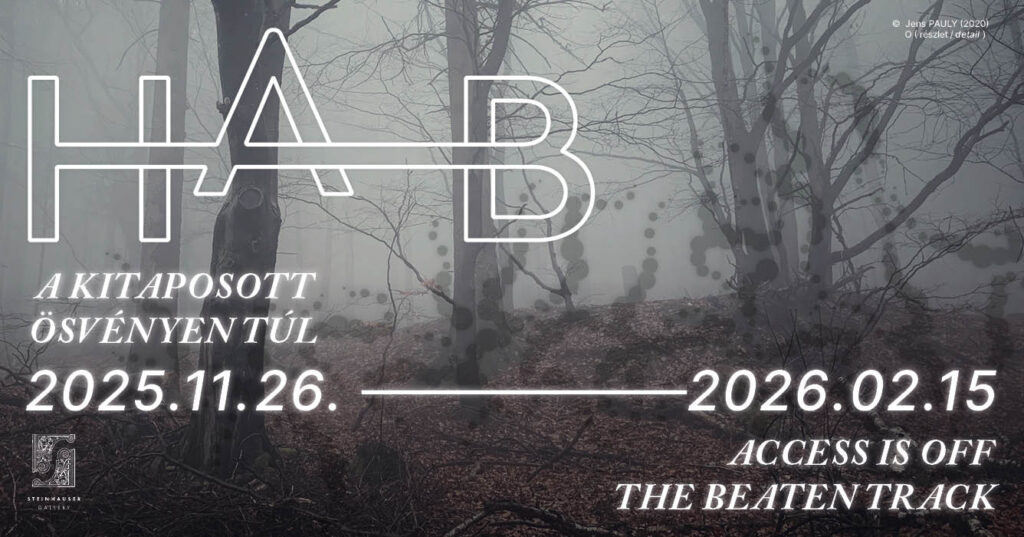2025.11.26. – 2026.02.15.
Exhibition: Access Is off the Beaten Track
 Free entry!
Free entry!
The beaten track is a metaphor for habit, of cultural and perceptual conditioning, which confines the world to a recognizable order of forms. Beyond this lies a departure from order, a transgression of the boundaries of perception, knowledge, and meaning, a mapping of side roads, blind spots, and unfamiliar spaces. The international group exhibition Access Is off the Beaten Track seeks inroads to these. The exhibits open up spaces and experiences where the perception of reality is disrupted and certainty is replaced by the strangeness lurking within the familiar.
Decay, the instability of the body and matter at large, and the perception of hidden and invisible forces in art are symptomatic expressions of a collective destabilization that affects the subject, identity, the environment, and our perception of reality alike. Today, the aesthetic experiences are metaphors not so much for an uncanny, unburied past, but for an uncertain perception of reality in the present.
The exhibition seeks to explore this contemporary restlessness, the mental and physical spaces defined by absence, tension, and fragmentation.
2025.10.23. – 01.18.
Exhibition: Metal & Matter. Dialogues of metal – exhibition by Andor Becskei and Antal Plank
Free entry!
The exhibition of HAB Sculpture Park by two sculptors for the Fall consists of works in conversation with each other. Metal as matter is a common language for both of them – resistant, yet shaped, cold but sensitive. The exhibition showcases paradoxes in the material: weight and light, structure and surface, humane gesture and artificial trace. The sensitivity of the materials when encountered in a common space establishes a dialogue in itself.
In the works of Antal Plank steel is the carrier of movement, colour and rhythm. Steel carries simoultaneously the raw strength of the industrual world, and the subtleness of geometry. Colour is the natural part of the surface, it does not ornament, but becomes an energy that transforms matter into living presence. Beyond every geometrical structure there is the humane gesture: the balance of order and play.
In the pieces by Andor Becskei metal turns into fragility. Welding, burning and oxidation are not hidden, but become part of the work as if the matter breathed. Sculptures hover between rigid and organic: metal does not resist, but allows. The works carry paradoxes: the organic forms of seemingly soft textile are made of steelthreads. Their soft curves are counterposed by the angular postaments.


